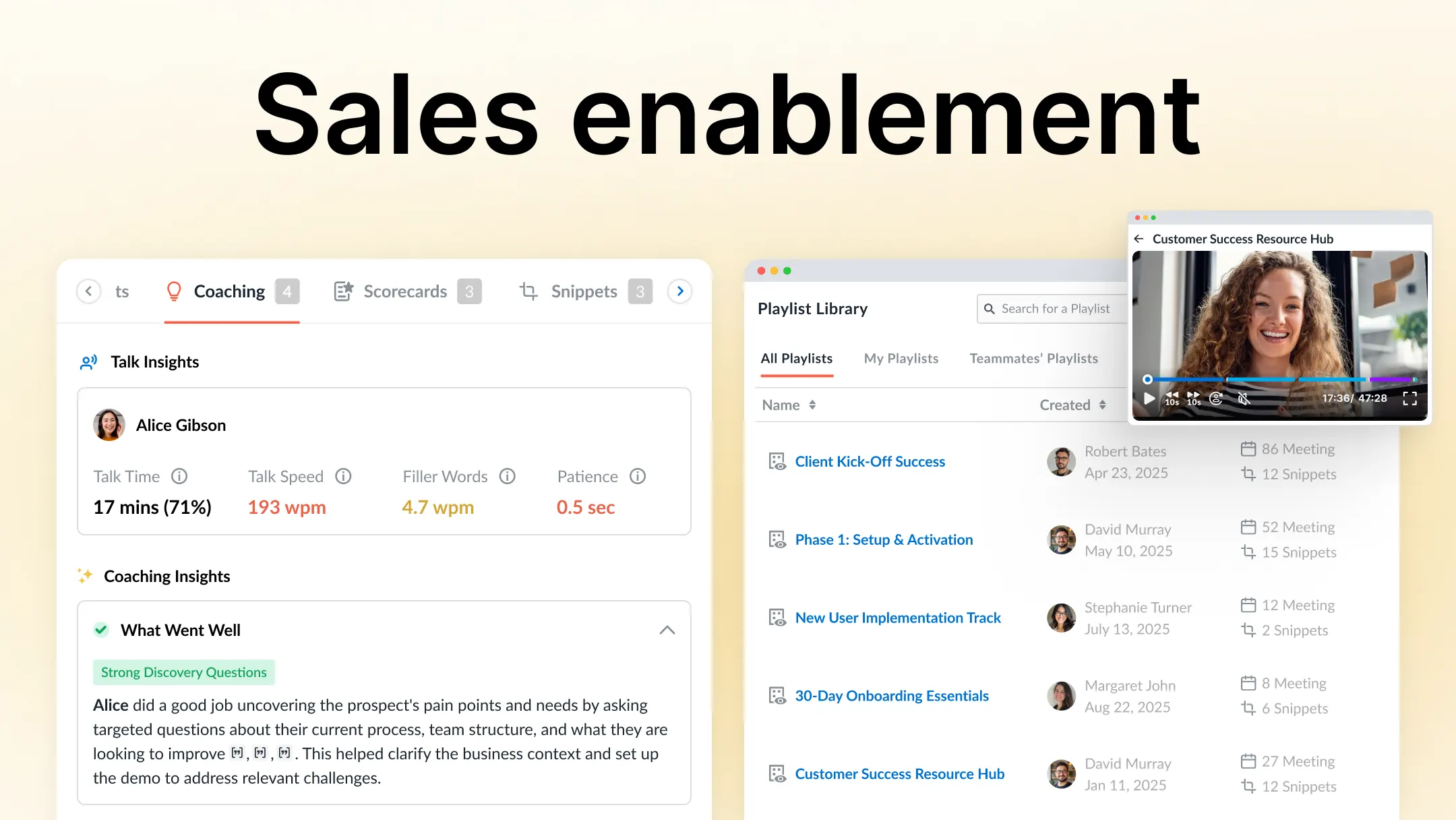How to calculate revenue projections and commit reliable forecasts
Table of Contents:

As companies grow, they begin to establish a forecasting process. Some do it on spreadsheets, others leverage the numbers committed by sales and customer success reps on the CRM, and others invest in building a reliable forecasting process depending on where they are in the forecasting maturity curve.
While the fundamental idea behind forecasting is to improve visibility across the organization and ensure the ball isn’t dropped at any stage, it’s essential to build a culture of sales forecasting to drive predictable revenue.
In this blog post, we will look at how to calculate revenue projections and commit reliable forecasts. We hope this blog helps you identify where to invest your resources, which deals to prioritize, and what gaps to address.
What is projected revenue
At its core, revenue projection is an educated guess about future sales and potential revenue expansion with existing customers based on historical data, current market trends, and other financial indicators.
This process may involve various methods, ranging from simple calculations based on past sales data to complex financial modeling involving numerous variables. Regardless of the method used, the principal aim remains to estimate the revenue a business will generate in a specific period.
These revenue forecasts help businesses anticipate future financial positions and provide valuable insights into market conditions and industry trends. They help business leaders make informed decisions about marketing, hiring, expansion, and investment strategies.
They also guide businesses in setting realistic targets and assessing the feasibility of their business models. It is crucial to strive for as much accuracy as possible in your revenue projections. Accurate forecasts help you to avoid unexpected financial difficulties, ensure adequate resource allocation, and evaluate the viability of your business strategy.
They also enable you to set realistic business goals, assess performance accurately, and foster investor confidence in your business.
Barriers to accurate revenue forecasting
While all of us want to forecast revenue as accurately as humanly possible, there are a few hurdles that we need to get past.
- Data problems: Not having enough data, relying on the wrong data, or information that cannot be mapped back to (for example: not being able to map the deal value to customer conversations)
- Baseless projections: Forecasting a pipeline based on hunches and being over-optimistic
- The disconnect between forecasts and reality: Not reviewing the forecasts periodically and revising the projections based on deal progression, the churn of existing accounts, and more
How to calculate projected revenue
Calculating revenue projections involves several steps. Firstly, the company needs to identify its revenue streams. These may include sales, services, or other revenue-generating activities.
Once the revenue streams are identified, the company needs to estimate the amount and timing of each revenue source. This can be done using historical data, market research, and other relevant information.
When calculating revenue projections, there are a few key metrics you’ll want to keep in mind. First, look at the total number of customers you have. Then, you’ll want to look at your annual recurring revenue (ARR).
ARR is like your net income—but instead of one-time sales, it’s coming from people who have signed up for your service and are paying for it yearly. It’s a key metric used by SaaS businesses to measure the value of their recurring revenue.
ARR = monthly recurring revenue x 12
ARR offers a clear view of your predictable revenue. It helps you forecast your earnings and identify trends, potential issues, and growth opportunities.
You’ll also want to forecast what your revenue growth is going to be over time.
This will help you determine how much revenue you’re expected to bring in each month. Suppose you know what that number will be. In that case, it’ll be easier for your team to plan accordingly and put efforts toward activities that will bring in more revenue!
For that, you need to understand your customers more granularly. You need to know your average revenue per customer/user (ARPU).
ARPU = total revenue over a specific period / number of active users during the same timeframe.
By understanding ARPU, you can enhance your customer segmentation, optimize pricing, and improve your overall marketing and sales efforts to maximize profitability.
Finally, don’t forget about revenue churn. Churn is how many customers leave your service each month for cancellations or other reasons.
Churn = Number of customers lost during a specific period / number at the start of that period.
High customer churn rates can significantly impact your ARR and ARPU, reducing revenue projections. Therefore, understanding and controlling churn is essential for accurately forecasting revenue and ensuring the long-term financial health of a company. The lower this number is, the better.
Now lets see the exact step by step process of calculating projected revenue.
Calculating projected revenue involves estimating the income a business expects to generate over a specific period. Here’s a step-by-step process:
1. Identify revenue components
First, look at where your money comes from. This could be sales of physical products (like a retail store), services you provide (like consulting), or recurring payments (like software subscriptions). Each of these needs its own approach.
- Product Revenue: Sales from products.
- Service Revenue: Earnings from services offered.
- Recurring Revenue: Subscription or retainer-based income.
2. Define the time period
Timing matters a lot. Most businesses work with monthly predictions, but you might want quarterly or yearly views depending on your sales cycles.
A restaurant might focus on monthly numbers, while a B2B software company might look at yearly patterns.
3. Use a revenue formula
The basic formula is:
Projected Revenue = Number of Units Sold × Price per Unit
For services:
Projected Revenue = Number of Customers × Average Revenue per Customer/User (ARPC)
For subscriptions:
Projected Revenue = Number of Subscribers × Subscription Fee × Duration
4. Analyze historical data
Past performance is your best friend here. Pull up your sales data from the last couple of years. Notice any patterns? Maybe you're busiest during holidays, or your B2B sales slow down in summer. These patterns help make your predictions more realistic.
5. Incorporate growth rate
Growth is tricky to predict, but you can make educated guesses based on:
- How fast you've grown before
- What similar companies in your industry typically achieve
- Any big changes you're planning (new products, marketing campaigns, etc.)
Then simply apply the formula:
Projected Revenue = Current Revenue × (1 + Growth Rate)
6. Account for variables
Don’t lose sight of the bigger picture. Are your competitors leveraging any new technologies or strategies that could give them an edge? For example, if a competitor quickly adopts AI to streamline their sales process, they could see a boost in conversion rates, leading to higher projected revenue. This could influence your own growth trajectory, highlighting the importance of staying competitive and agile in response to market shifts.
Customer behavior matters too. Think about:
- How many new customers you typically get each month
- How many stick around
- How many leave (especially important for subscription businesses)
7. Include discounts and refunds
Be realistic about money you won't keep. Adjust the projection by deducting expected discounts, returns, or refunds.
8. Scenario planning
Smart businesses plan for different possibilities.
- Create best-case, worst-case, and most-likely-case scenarios.
- Factor in optimistic or pessimistic market changes.
9. Use software tools
Finally, don't try to track all this in your head. Use spreadsheet software or CRM/revenue intelligence software like Avoma to keep everything organized. Excel and Google Sheets work great for most businesses, but bigger companies might want something more sophisticated.
Now that the basics are covered let’s look at how to commit to a reliable forecast.
Committing to reliable forecasts with a forecasting assistant
Committing to reliable forecasts requires a lot of discipline. It is about creating an accurate forecast and regularly reviewing and updating it based on how your deals are progressing and the potential expansions and churns with your existing customer accounts.
Each business might have its unique approach to forecasting revenue based on their maturity stage.

That said, companies need to establish a system for monitoring their performance against the forecasts, identifying discrepancies, and making necessary adjustments. This commitment ensures that the forecasts remain relevant and useful for decision-making.
In essence, committing to reliable forecasts is about establishing a culture of accountability and continuous improvement within the company.
Typically, the forecast numbers of each sale and customer success rep are based on the deals in their pipeline that they expect to close in a given time, for example, deals they expect to close this month.
But that isn’t always right. Sometimes, a rep might prospect a specific account and believe they could close the deal in the quarter. There could also be opportunities slated to close next quarter, but your rep expects an accelerated closure.
From our experience, we at Avoma recommend you have a forecast commitment number in addition to your consolidated deal value. This accommodates any deals with a close date later than the given period, but reps expect an accelerated closure.
Using a tool like Avoma’s AI Forecasting Assistant helps you accommodate this 👇

Analyzing deal progress at every stage
While you commit a forecast value, the real value of a forecasting tool is being able to track the progress of the committed deals across stages, such as deals won, deals lost, and existing pipeline value, so that at any given point, you know the gap between revenue attained and revenue committed.

Real-time tracking refers to constantly monitoring and recording business activities in real-time. This is critical for accurate revenue projections because it keeps you updated on your business's present performance.
It enables you to evaluate your current deals and churns. It helps to determine how your revenue might change in the coming days.
If you have the forecasting tool as part of your conversation intelligence platform, it makes you track deal progression a lot easier.
- The deal stages are automatically updated based on your conversations
- Every action on the deal is monitored for potential risks in the deal where the ball gets dropped

The idea is to pinpoint areas that need improvement or indicate where resources can be better allocated. Since the entire numbers are based on current and factual data, it reduces the chances of inaccuracies in your revenue projections. As a result, your forecasts are more reliable and precise.
The next step is learning from the alerts and planning the next steps.
Summing up…
The net goal of revenue forecasts is predictable revenue, which heavily relies on how predictable your pipeline is. So, with every forecast review, capture the learnings, address the gaps, and realign on the expectations.
Documenting the action items is crucial so the execution can be followed through.
Investing in an all-in-one conversation intelligence platform with a strong forecasting engine like Avoma can help you connect the dots between your forecast commits and conversations and also help you automatically capture the notes from every conversation so that you don’t have to manually do it.
Save time, reduce manual errors, and ensure no deal slips through the cracks!
Frequently Asked Questions






What's stopping you from turning every conversation into actionable insights?









